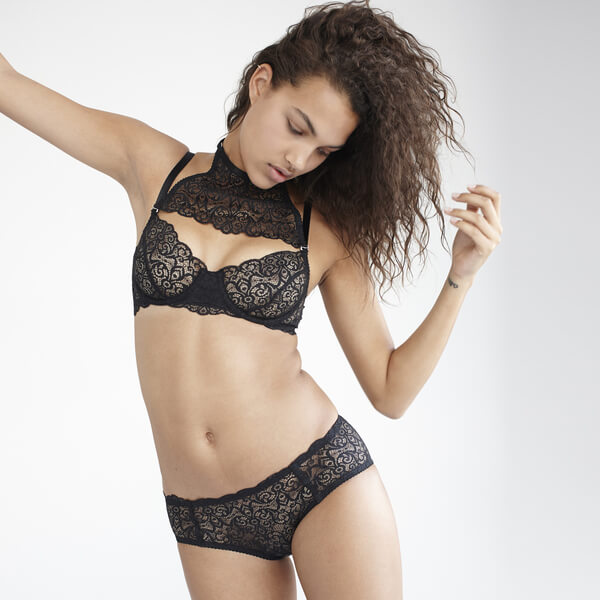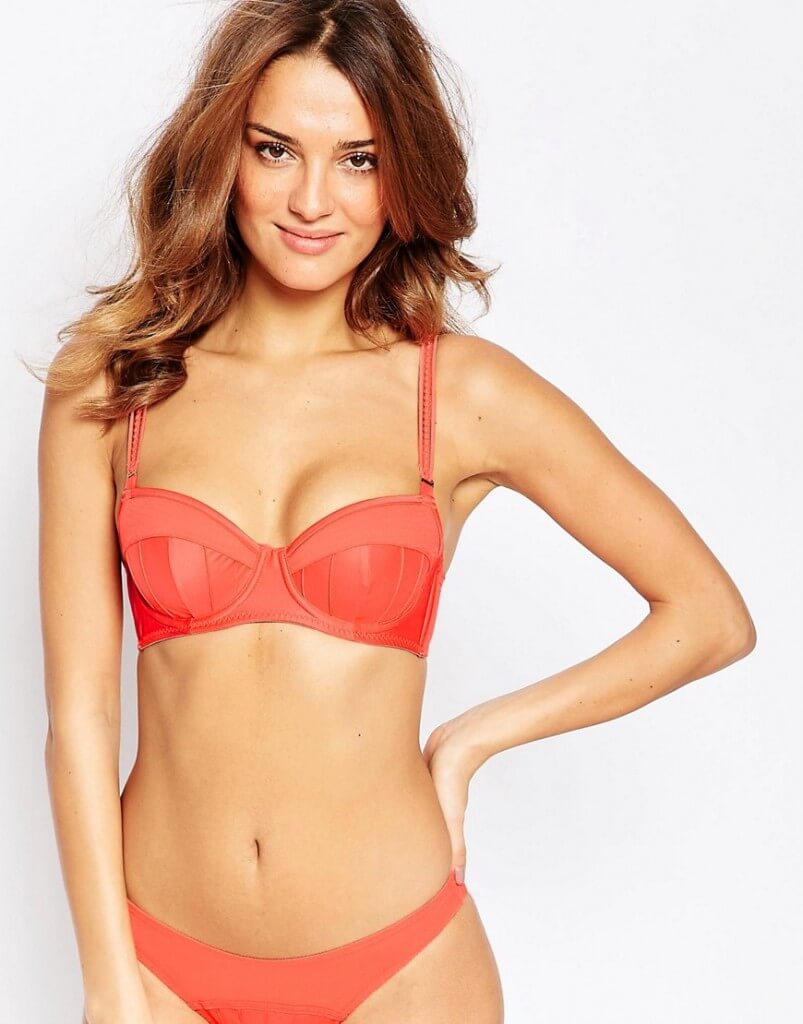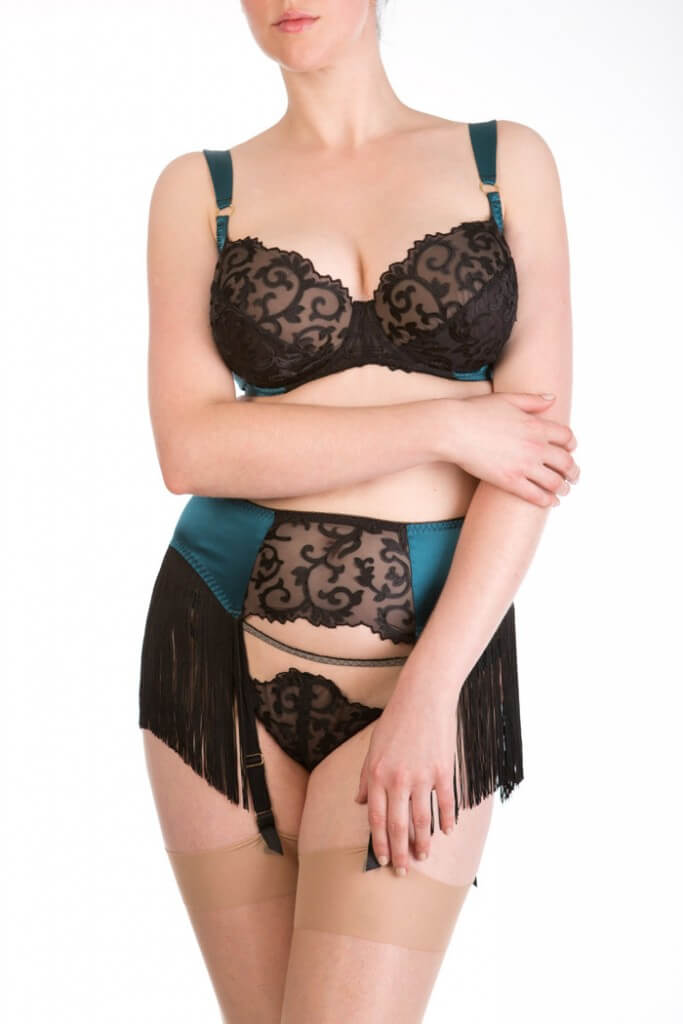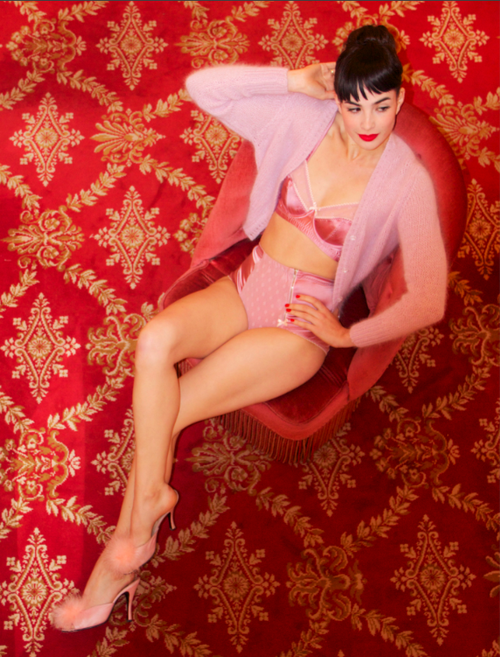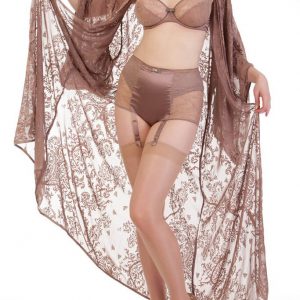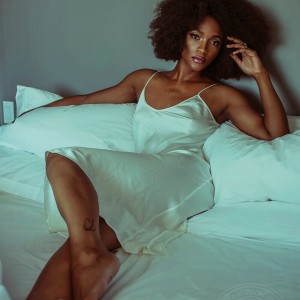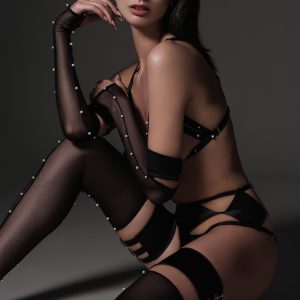What Makes a Supportive Full Bust Bra Work?
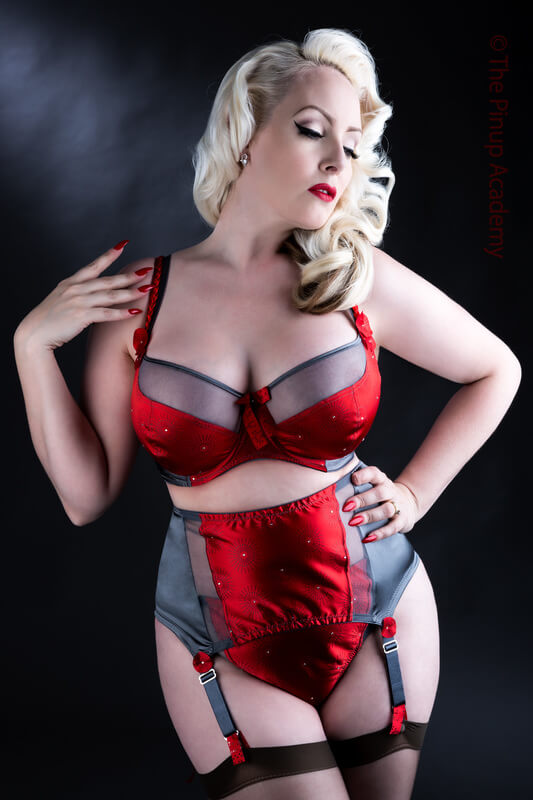
Kimtimates concept balconette bra, suspender belt and panty
It's an unusual experience for people who wear over a D cup to go into a store and be able to try on *any* style they like. But more and more, fashionable brands are expanding into fuller cup sizes, meaning the cute bras at department stores and lingerie boutiques fit more people.
Brands that previously made only "core sizes" (typically 32A through 36D or DD) started noticing that boutiques use sizing methods other than "plus four." Many people are wearing bras with a smaller band and larger cup than core sizes provide, and some of those sizes are finally making their way into stores.
I typically wear a 34F, so I'm right in that smaller full cup range that designers often begin expanding into. "Up to a G cup!" reads the tag on many mass-market bras nowadays. What an awesome feeling, to go into a shop I was previously sized out of and try on a super cute bra that I actually fit into! But while additional sizes are always good news when it comes to accessibility, it doesn't mean that the bras provide the best support for larger cup sizes.
I was stoked to buy the Stella McCartney Cherie Sneezing bra, since it now comes in my size (and larger!), but it just isn't engineered for larger breasts. The pretty elastic rolls onto itself when presented with the extra weight, the band is super stretchy, and the cute mermaid-shell-esque cups let my breasts just kind of... sit in them, rather than really giving any support.
This isn't an experience unique to this bra, either. I've tried on so many bras from really great companies, new and old, big and small, who have extended their sizes up to an F or G cup, and the fit just isn't there. But there are so many brands making comfortable full cup bras that have great fit and beautiful lift. What do those specialty bras have that others don't?
When a bra is sized up, it takes more engineering than, say, a t-shirt. For a t-shirt, you really only need to make it wider around, maybe a little bit longer.
For a bra, there are so many aspects that need to be adjusted, and sheer size is just one of them. But I'm not a full cup lingerie designer (hell, I'm not even a contour designer), so I spoke with someone who makes exclusively full cup lingerie: Leanna Williams, director of the full bust luxury lingerie line Harlow & Fox.
"Full bust bras, by the very nature of needing to support a greater volume of weight, have multiple further considerations that aren’t applicable to core sizes," says Williams. If a company scales up a 36B to a 30DD with no structural changes, the wearer might have straps digging into her shoulders, fabric stretching too far, and underwires bending all over the place.
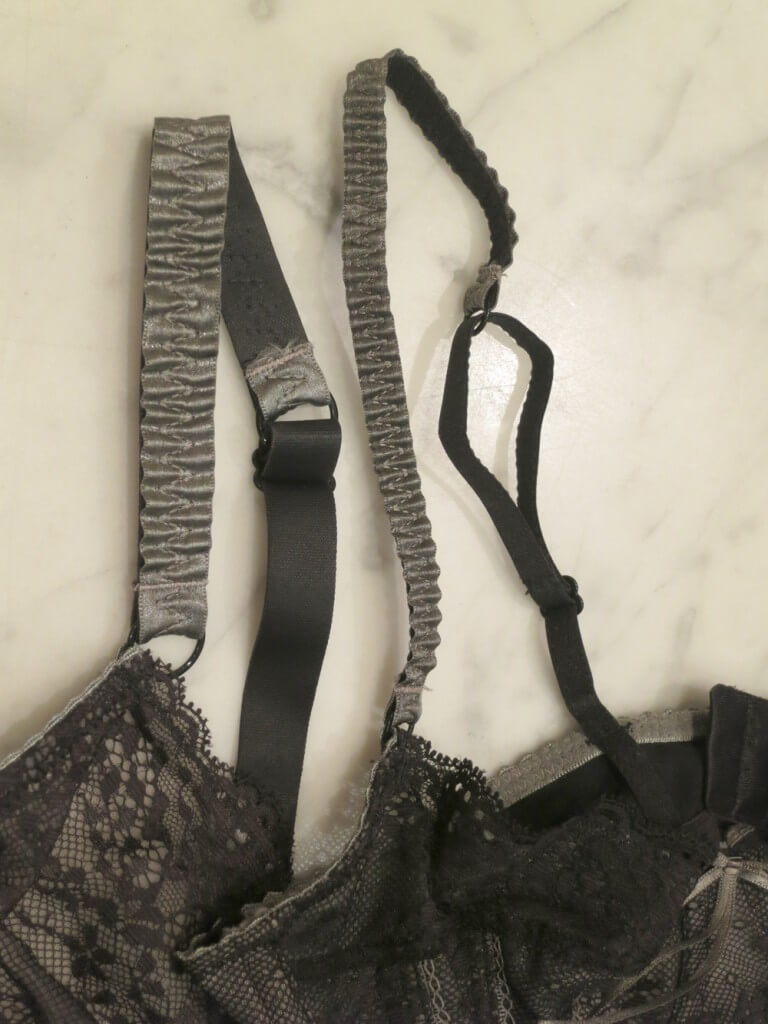
Straps on a 38G bra vs. straps on a 32B bra by Heidi Klum
Almost every aspect of a bra needs to be readjusted for larger cup sizes, starting with thicker straps. Pretty, thin elastic straps are probably not going to cut it. Although most of the support of a bra should come from the band, the straps often need to be made of a thicker, sturdier elastic for D+ cup styles.
It's more expensive to source multiple widths of the same elastic, and it can change the look of the bra, so manufacturers who are sizing up often skip this detail during development. However, stretched-out, rolling elastic is not a good look, and not a helpful feature.
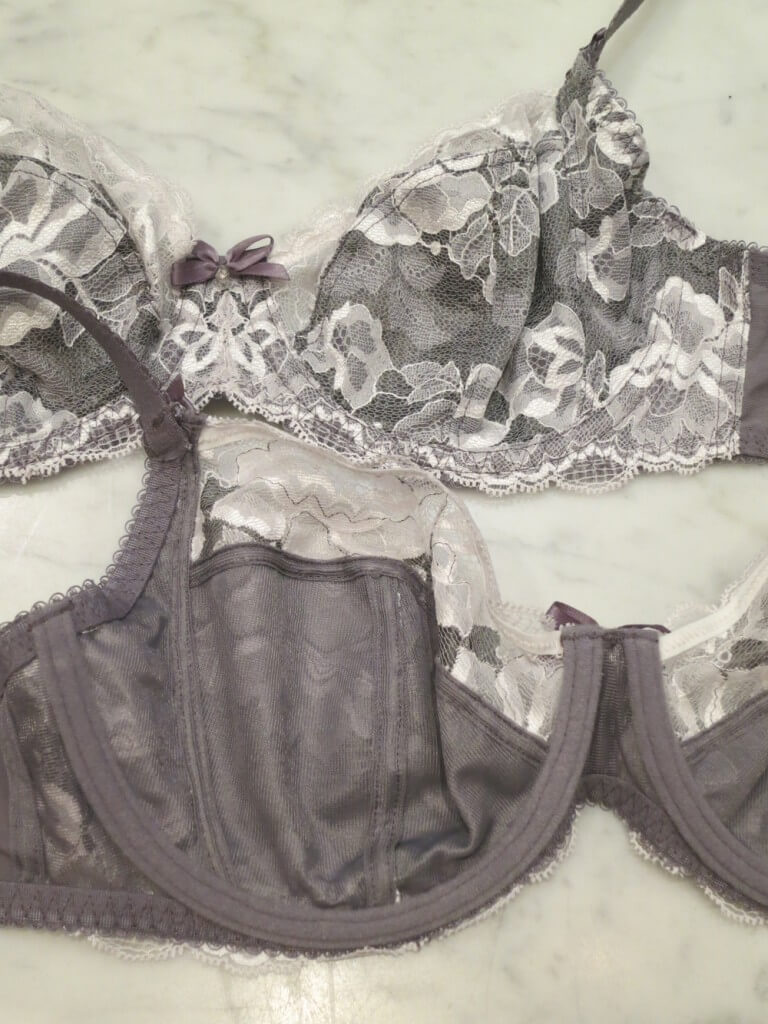
This Fantasie bra, designed specifically for larger cups, uses a floral lace that is bonded to a sturdy mesh for extra support in the cup.
Another aspect that is sometimes overlooked during grading is the need for sturdier fabrics. Stretch-lace bra cups are so pretty, comfortable, and delicate-looking, but they just don't work for larger cup sizes.
Cute stretch lace bras that come in my size are like roller coaster rides; they start with joy and excitement and end with immediate disappointment upon trying them on. It often feels like wearing a crop top with an underwire. When materials are sturdier, bras are more supportive.
If you're interested in a stretch lace cup that comes in larger sizes, check to see if it has a non-stretch mesh or similar thin woven fabric lining that will keep the cup from stretching out as soon as you put it on. Plus, check the stretchiness of a band's fabric. I've tried on bras with thick and sturdy elastic in the larger sizes, but the fabric had no additional lining and was just as stretchy as the smaller sizes.
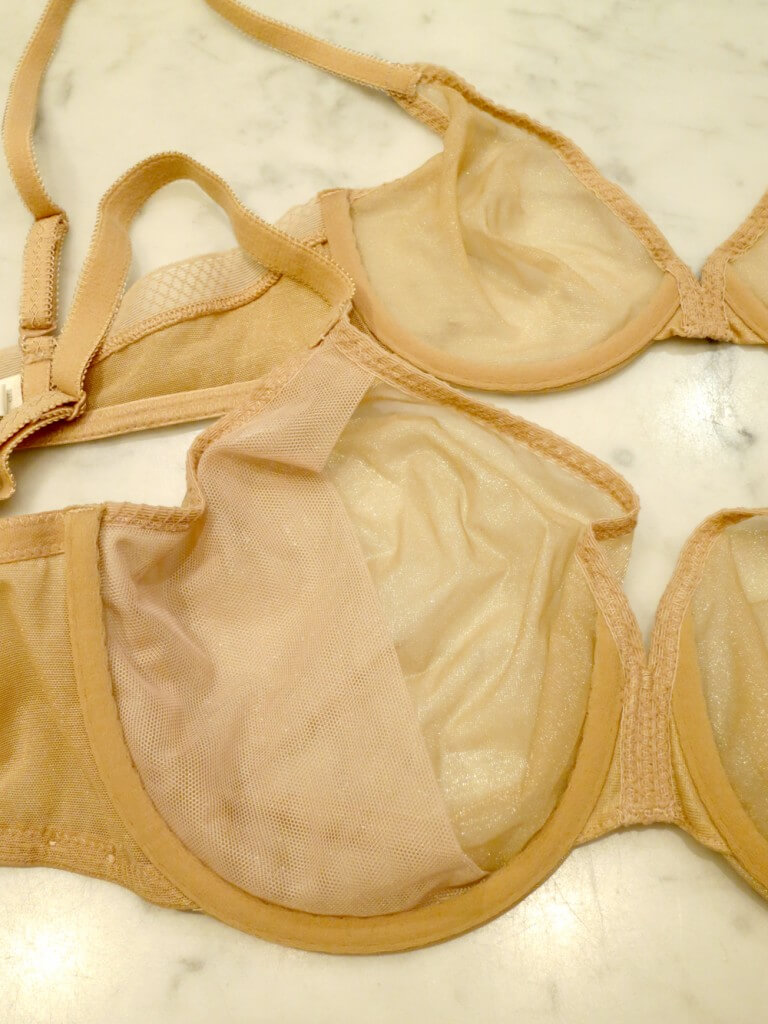
A Gossard bra sized 30B is unlined and sling-less, while the same bra in a 30G has a sling added for more support.
Side slings are a small but important addition. Slings are those strips of fabric on the inside of a bra that stretch across the bottom outer corners of the cups. They help lift the tissue up and out, and can be the difference between a bra that has decent lift and a bra that is shockingly comfortable, very supportive, and provides a narrow silhouette.
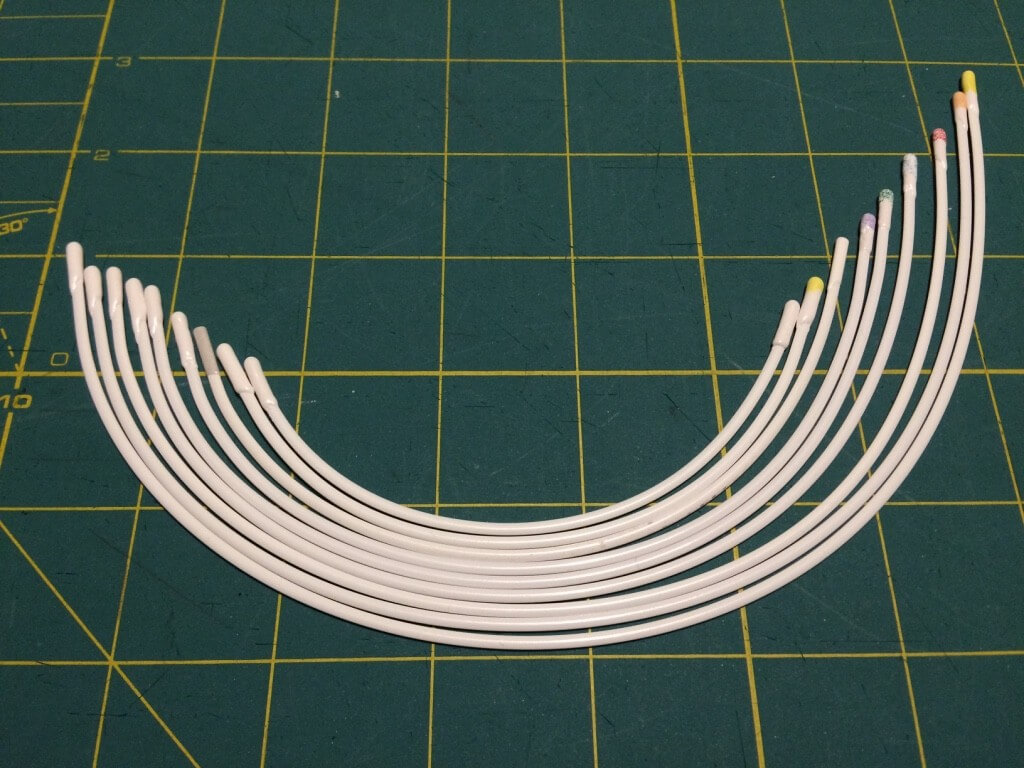
An array of graded undewires from Kimtimate's Underwires 102 blog post.
If you have ever worn a bra in a larger size with a thin plastic underwire, you know how important more rigid wires are. Full bust blogger Sweet Nothing's interview with Kim Hamilton, the brain behind the full-bust-focused business Kimtimates, illuminates a lot of the unique challenges designers face when making larger bras. And although she speaks in particular about the G+ market, many of these concepts are applicable to the smaller full bust market as well.
"Developing a heavier gauge wire for stability is key in larger sizes," says Hamilton, who wrote a four-part series on underwire education, so she definitely knows what she's talking about. When a bra feels like it's bending over your ribcage as you move, a flimsy underwire could be the culprit. Look for bras with metal wires instead of plastic ones, and thicker wire over thinner.
One more reason that it's not enough to simply grade a pattern up evenly: breasts don't get larger evenly. Larger breasts have more projection, and need more space because of it. This became apparent to me when I was in Paris last year and spent way, way too much money at Fifi Chachnil, my favorite designer since forever. Fifi recently expanded her size range and I was able to buy a bra that actually fit me.
I love my Fifi Chachnil lingerie! They are some of the most beautifully-made, sweetly-detailed pieces I own. But the bra makes me look rather flat. The cups fit around all my tissue without cutting in at the top, the underwires are in an OK spot, but from the side, it looks like I'm wearing a minimizer. This is one of those styles that would benefit from additional projection in the cup in larger sizes.
Which brings us to perhaps the most important aspect of a full-cup bra: specially-developed patterns. Since many sizes share cup volume with one another, an easy way to make a bra in an extended size (and what I assume many brands do) is to simply grade up, or scale up, a pattern.
But even if the calculations for breast volume are correct, larger breasts on a smaller frame require different shapes for the best support. "A wire for a 38D could be used to make a 32F, but those two bodies are likely to have very different breast shapes," says Williams. "It’s much better to create a specific pattern just for that size segment, fit it on bodies of women in that size segment, and alter grade rules and pattern shapes to work specifically for them."
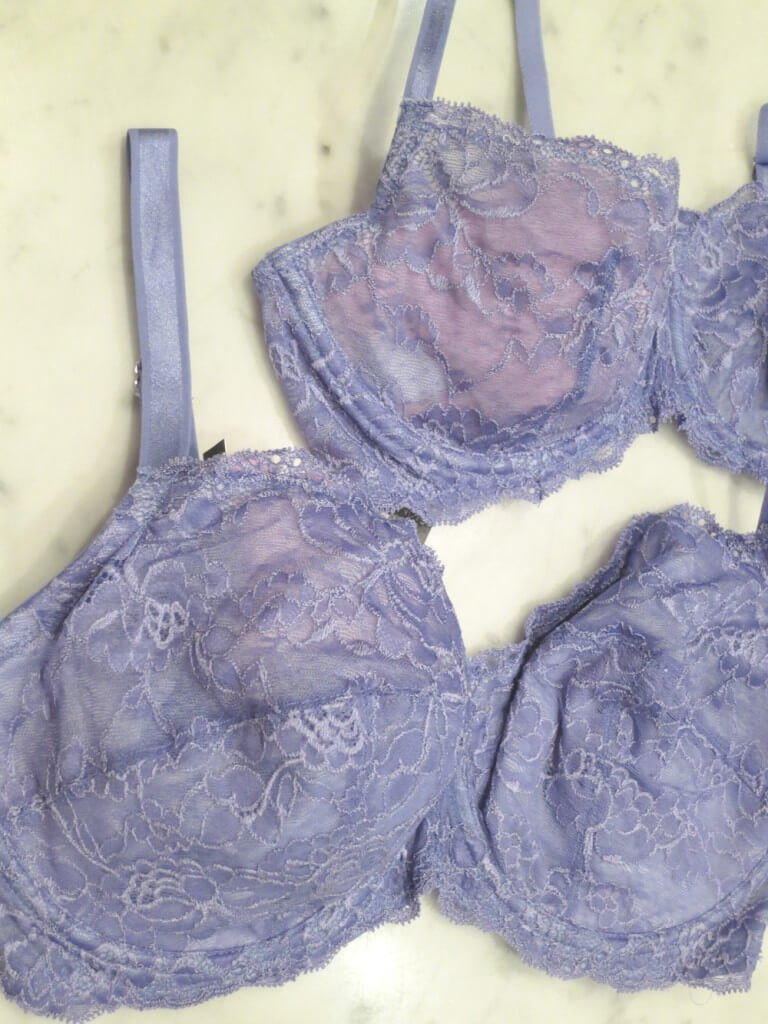
These two Montelle bras have essentially the same "look" but are technically two different styles; the top is a demi bra available in core sizes, and the bottom is a full cup bra that comes in a range of larger sizes.
A pattern change isn't typically noticeable. However, when a brand just can't get a bra to work at larger sizes, they'll sometimes change the style from a demi cup to a full cup past a certain size. In those cases, the bra just won't be supportive for larger sizes in the original shape, so the design team makes the decision to alter it. It can be confusing and frustrating to try on a cute demi bra, only to find that your size has much more coverage. However, the support wouldn't be there otherwise.
So next time you lament that a pretty bra doesn't come in your size, consider that if it did, it might look like a completely different bra. Or it might not support you the way you want it to.
If you wear full bust bras, what has been your experience with core-sized lines that have started making extended sizes? Do you value the look of a bra over the support it provides?





